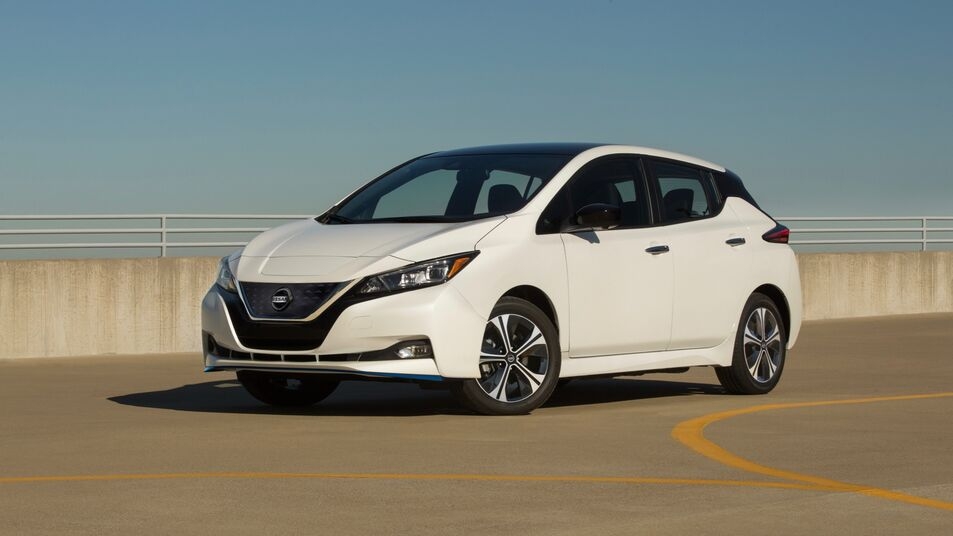Thinking About a PHEV in 2026? Here’s What Actually Makes Sense
Let’s get something straight up front: plug-in hybrids aren’t going anywhere in 2026. Not everyone wants to deal with range anxiety. Not everyone can charge at home. And not everyone’s ready to jump into a $60K EV with spotty charging networks.
That’s where plug-in hybrids — PHEVs — still make a ton of sense. You get the EV driving feel for local trips, but never have to think twice about a road trip or snowy day. And in 2026, this segment is heating up fast. Longer EV-only ranges, smarter hybrid systems, and in some cases, better ownership math than going full electric.
I dug into every 2026 PHEV SUV that matters — real-world fuel economy, how far they go on battery alone, what they cost to live with, and what’s changed for the upcoming model year. Whether you’re looking to ditch gas most of the time or just hedge your EV bets, this guide breaks down which PHEVs are actually worth buying in 2026 — and which ones are just dressed-up hybrids.
What We Cover Here
We’re not here to regurgitate EPA ratings. We’re comparing:
- EV-only range (real world, not just brochure numbers)
- Hybrid MPG once the battery runs out
- Charging time and compatibility
- Tax credit eligibility
- Ownership cost over 5 years (fuel, maintenance, depreciation)
- Snow and towing performance (where applicable)
Let’s rank the best 2026 plug-in hybrid SUVs from top to bottom — based on how well they actually do the job.
1. 2026 Toyota RAV4 Prime (Refreshed)
EV Range: 48–53 miles (estimated, improved battery)
Hybrid MPG: 38–42 MPG (after battery)
Charge Time: 2.5 hours (Level 2)
Starting Price: $43,000 (est)
Tax Credit: Yes, full federal
Why It Wins
Toyota’s doubling down on the Prime for 2026. Updated battery chemistry adds EV range, and real-world reports say we’re looking at over 50 miles on a full charge. That’s double what most PHEVs offer. Once the battery’s done, the RAV4 still gets north of 40 MPG — and it does all this with AWD, decent cargo space, and Toyota-level resale.
What We Think
If you want one PHEV that just works for everything — errands, snow, road trips — this is still the one to beat. Expect long dealer waits, though.
2. 2026 Hyundai Santa Fe Plug-In Hybrid
EV Range: 35–37 miles
Hybrid MPG: 33 MPG
Charge Time: 3.5 hours (Level 2)
Starting Price: $41,800
Tax Credit: Yes (if built in U.S.)
Why It’s a Strong Contender
The new Santa Fe’s boxy shape hides a solid plug-in system. 35+ real miles of electric driving is enough for most commutes, and the hybrid backup is smooth and efficient. Interior’s sharp, second-row space is big, and the AWD system works in snow without drama.
What We Think
This is the underrated PHEV. Nobody’s bragging about it, but it does everything well — and often cheaper than the Toyota.
3. 2026 Mitsubishi Outlander PHEV
EV Range: 38–40 miles
Hybrid MPG: 28–31 MPG
Charge Time: 6.5 hours (Level 2)
Starting Price: $40,845
Tax Credit: Partial (U.S. sourcing limits apply)
Why It’s Here
The Outlander has quietly become a top PHEV seller — and for good reason. It offers 3-row seating, solid EV range, and actual AWD capability. The system allows blended electric + gas power for better traction, and it’s one of the few that still offers DC fast charging.
What We Think
If you need seating for more than five, this is your PHEV. Just be aware: real-world MPG once the battery’s done is lower than rivals.
4. 2026 Ford Escape Plug-In Hybrid
EV Range: 39–41 miles
Hybrid MPG: 40+ MPG
Charge Time: 3.5 hours (Level 2)
Starting Price: $40,500
Tax Credit: Yes (U.S.-made)
Why It’s Worth Considering
Ford doesn’t talk much about the Escape PHEV, but it’s quietly one of the most efficient on gas once the battery’s used up. You get near-Prius mileage even without a plug. EV range is decent. It’s not AWD, though — FWD only, which limits its snow appeal.
What We Think
If you live in a warm state or just want pure efficiency, this is a sleeper hit. But skip it if winter is part of your life.
5. 2026 Kia Sportage Plug-In Hybrid
EV Range: 34–36 miles
Hybrid MPG: 35 MPG
Charge Time: 3.5 hours
Starting Price: $40,200
Tax Credit: Yes (U.S.-built)
Why It’s Solid
Kia’s version of Hyundai’s Santa Fe powertrain, but in a smaller package. This is for people who want compact, affordable, and efficient without giving up plug-in benefits. Good tech inside, and it actually handles better than you’d expect.
What We Think
A great commuter PHEV. Just don’t expect to tow or pack in a family of five with gear.
6. 2026 Jeep Grand Cherokee 4xe
EV Range: 24–26 miles
Hybrid MPG: 23–26 MPG
Charge Time: 3 hours
Starting Price: $59,900
Tax Credit: No (pricing over cap)
Why It’s Different
This isn’t about the economy — it’s about power. Jeep’s plug-in system delivers torque instantly off-road, and it can actually handle trails in electric mode. If you want a luxury-feeling SUV that still gets a fuel break during weekday errands, this is one of the few.
What We Think
Too expensive for most, but if you’re doing weekend cabin trips and care more about off-road EV performance than economy? It’s got a niche.
7. 2026 Volvo XC60 Recharge
EV Range: 36–38 miles
Hybrid MPG: 28 MPG
Charge Time: 5 hours
Starting Price: $57,900
Tax Credit: Partial
Why It’s Here
Volvo keeps improving their T8 powertrain. The XC60 Recharge now clears 35+ EV miles easily, with a luxury cabin and smooth hybrid transitions. It’s pricey, but the quality’s there — and the EV motor is genuinely strong.
What We Think
If you want a premium feel without going full EV, this walks the line nicely. Just don’t expect stellar MPG after the battery’s done.
8. 2026 Toyota Grand Highlander Prime
EV Range: 36 miles (estimated)
Hybrid MPG: 33–35 MPG
Charge Time: 3.5 hours
Starting Price: $54,900
Tax Credit: Likely yes
Why It Matters
New for 2026, Toyota’s adding plug-in power to the bigger Grand Highlander. You get 3 rows, real EV-only driving for local trips, and Toyota’s top-notch hybrid hardware.
What We Think
If you’ve got a family and want one vehicle to do it all? This is the most balanced large SUV on the list. Just expect to pay for it.
EV Range Rankings (Real World)
- Toyota RAV4 Prime – 50+ miles
- Mitsubishi Outlander PHEV – 40 miles
- Ford Escape PHEV – 39–41 miles
- Volvo XC60 Recharge – 38 miles
- Hyundai Santa Fe PHEV – 36–37 miles
- Toyota Grand Highlander Prime – 36 miles (est)
- Kia Sportage PHEV – 34–36 miles
- Jeep Grand Cherokee 4xe – 25 miles
What We Think
If you’re shopping for a plug-in hybrid SUV in 2026, here’s the truth: you’ve got better options than ever — but you also have more ways to waste money than ever if you don’t pay attention.
Buyers today aren’t just looking at MPG anymore — they want real EV range, low long-term fuel costs, and the ability to drive electric most of the week without the range stress of a full battery EV. And for that, PHEVs still make perfect sense — especially when your daily drive is under 40 miles and you don’t want to rely on fast chargers.
Here’s how the field actually stacks up when you look beyond the brochure:
If your goal is maximum electric miles with backup gas efficiency, the Toyota RAV4 Prime is still king in 2026. It gets you over 50 miles of real-world EV driving, plus excellent MPG when the battery’s done. That’s the winning combo for people who want to save fuel every day and not just when the weather’s warm or the road is flat.
Need three rows and real EV driving for school runs and grocery hauls? The 2026 Toyota Grand Highlander Prime and Mitsubishi Outlander PHEV are your top two. The Outlander is especially solid if you live in snow country or need occasional DC fast charging — it’s one of the only PHEVs that still offers it.
Want low fuel bills year-round with regular home charging? The Ford Escape PHEV and Hyundai Santa Fe PHEV are the most balanced on ownership cost. Both deliver over 35 EV miles per charge and strong hybrid MPG, meaning you’ll spend less at the pump even after your battery runs out — a huge advantage over heavier or luxury-focused models like the Jeep 4xe or XC60 Recharge.
Living somewhere cold or hilly? Don’t ignore traction. The Jeep 4xe offers one of the only plug-in systems with real 4×4 capability in EV mode, making it ideal for winter trails, cabin roads, or unplowed driveways — even if it’s not the most economical choice.
And finally, if you’re eyeing a luxury plug-in SUV, the Volvo XC60 Recharge gives you 35+ miles of electric range with one of the best hybrid drive transitions in the segment. It’s not cheap, but for buyers comparing it to an Audi Q5 or BMW X3, the XC60 still delivers more efficiency per dollar.
The Real Advice: Know How You Drive Before You Buy
Here’s the mistake most shoppers make: they shop by EV range without looking at hybrid MPG. A plug-in SUV that gives you 40 electric miles but drops to 21 MPG on gas will cost you more in the long run than one that gets 33–40 MPG in hybrid mode.
So before you buy, ask yourself:
- Can I charge at home or work daily?
- How far do I drive per day on average?
- Do I drive mostly city, highway, or mixed?
- Will this be my only car — or a second family vehicle?
Because the best PHEV in 2026 isn’t just the one with the biggest EV range. It’s the one that fits how you actually live and drive — and saves you money on both sides of the battery.
Want the best all-around PHEV in 2026?
Toyota RAV4 Prime — still the benchmark.
Want 3 rows, usable EV range, and under $45K?
Outlander PHEV — strong value, strong range.
Want max MPG even after the battery is gone?
Ford Escape PHEV — most efficient post-EV driving.
Want luxury without full EV risk?
Volvo XC60 Recharge — premium feel, 35+ EV miles.
Want plug-in power + winter grip?
Jeep 4xe — torque, traction, trail-capable.
2026 is finally the year where PHEVs make full sense for more than just eco-nerds. If you charge regularly and drive under 50 miles a day, you’ll barely touch your gas tank. Add a heat pump, regenerative braking, and smart hybrid control — and these SUVs become smarter long-term investments than many full EVs in the same price range.








